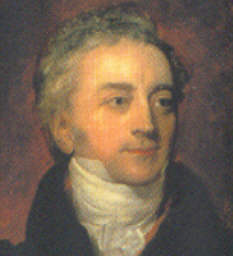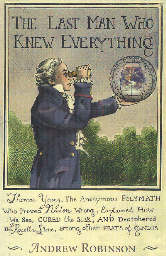During a summer job at a Celotex factory I worked for several weeks drilling holes in acoustical tiles.
Each tile was fed into my machine and my job was to pull the lever down until the large array of drills
penetrated about a cm or so into the board. It was an easy enough job, but I learned an amazing lesson
while filling in for the person who was on vacation. I was working next to an old man, and asked him how
long he had been doing this job. "Thirty years" was his answer. I suddenly created an image of my doing
this job for that long and I realized that could never happen for me. Recently during the financial collapse
of mortgage banks, I was listening to a conversation among lawyers and one mentioned a lawyer who
retired recently after working on a case for thirty years! One case. He started on the case when hired by
some large law firm and when he retired the case was still under litigation. The similarity of the old man at
the drill machine and the old lawyer with the one case are spookily similar. Scientists can create new
hypotheses and theories can form from them or they can find easy places to work on existing planks in
current theories. Young, whom I admire immensely, was of the former kind of scientist.
Scientists, true scientists, begin with a hypothesis which leads to experiments and if the experiments
confirm the hypothesis over time, the hypothesis grows to be called a theory. In the passage below,
Andrew Robinson explains and quotes Young's response to invectives about his work by reviewers in
Edinburgh.
[page 117, 118] This debate continues even today, in that non-scientists generally
imagine that scientists first do experiments and then look for hypotheses to
explain the results, whereas in fact, normally, hypothesis determines experiment,
which then acts as a check on the hypothesis. Young explains this cogently in his
reply:
[T]here are two general methods of communicating knowledge; the
analytical, where we proceed from the examination of effects to the
investigation of causes; the other synthetical, where we first lay
down the causes, and deduce from them the particular effects. In
the synthetical manner of explaining a new theory we necessarily
begin by assuming principles, which ought, in such a case, to bear
the modest name of hypotheses; and when we have compared their
consequences with all the phenomena, and have shown that the
agreement is perfect, we may justly change the temporary term
hypothesis into theory. This mode of reasoning is sufficient to
attach a value and importance to our theory, but it is not fully
decisive with respect to its exclusive truth, since it has not been
proved that no other hypothesis will agree with the facts. It is
exactly in this manner that I have endeavored to proceed in my
researches.
Thomas Young may have known everything, but he wasn't right about everything, but neither was the
author of this book. Robinson makes a common error in assuming that the ciliary fibers are muscles which
compress the lens of the eye to alter its curvature. Here is his statement:
[page 38] The human eye does accommodate by changing the curvature of its lens.
But he was wrong in considering the lens itself to be muscular. In fact, the ciliary
muscles, a set of radial muscles that surround the rubbery, jelly-like, non-muscular
lens, are what alter the curvature. The function of the ciliary muscles was not
known in Young's time, and so he attributed muscularity to the lens itself.
Young was wrong in that there are no muscles in the lenses itself. Robinson is wrong in implying that the ciliary muscles squeeze a flaccid lens to create a focus. Instead, there are tiny ligaments which pull the lens flat and the ciliary muscles must work against these ligaments to compress the lens. Reading something up close
requires constant work by these muscles resulting in cramps of these muscles and a steady state of myopia,
such as beset Thomas Young as his own calculations of his eyes proved.
[page 74] The near point of his own eye, after he had made the adjustment for the
convex lens, turned out to be eight inches; the more short-sighted a person is, the
nearer to the eye is his or her near point. In due course Young must have realized
his myopia, because in his autobiographical sketch he writes: "He felt some
inconvenience in society from being a little short sighted, and he used to attribute
in part to this circumstance the mistake which he sometimes made respecting the
impression produced by what he said or did, on the feelings of others." (It seems
possible that the frequent cases of mistaken identity in the dramatics plots of
plays and operas of Young's age were more convincing to audiences then than
they are now, because many people were short-sighted and did not wear
spectacles.)
One can only wonder what kinds of physical ailments, symptoms, or limitations appear as plot devices
in current movies. The movie "Rain Man" is one example of creative use of an autistic person as a plot
element.
On a trip to the British Museum, I was hurrying to get to Lord Elgin's marbles when I skidded to a
stop in front of a plexiglass case, and stared in awe. In front of me was the famous Rosetta Stone! I stood
in awe as I walked slowly around the stone. It contained the key to deciphering the hieroglyphic language
of ancient Egypt. It contain parallel translations in hieroglyphics, demotic script, and Greek. As I learned
later, the three languages were the fane or religious language Egyptian hieroglyphics, the pro-fane or
outside-the-temple demotic language of the demos or common people, and the language of commerce at
the time, Greek. Scholar could read the Greek script and were amazed to find this statement on the Stone
near the bottom: "This decree shall be inscribed on a stela of hard stone in sacred and native and Greek
characters and set up in each of the first, second, and third temples beside the image of the ever-living
king." (Page 151) The next step was to find the equivalent expression in the hieroglyphics to those in Greek,
a daunting task for a language for which no known speakers had been living for many centuries. Thomas
Young's familiarity with Greek from an early age and his close work with calligraphy in Greek gave him
a head start in the deciphering process which those who followed him used to their advantage, often without
crediting Young's work, especially by Champollion who ignored Young's pleas to relent in his monomania
to receive the sole credit.
[page 220] Either Champollion had too much vanity to concede anything important
to Young, or he had genuinely convinced himself, through his long years of
obsession with ancient Egypt, that the crucial first steps were really taken by him
— or perhaps there was an amalgam of both feelings in his mind. By sticking
intransigently to his claim of sole authorship, he achieve his ambition and came to
enjoy general acceptance as the decipherer of the Egyptian hieroglyphs. But in so
doing he lost his good name. Young was right in his gentle warning: Champollion's
personal reputation will forever be tainted by his hubris toward Young.
Several more items of Thomas Young's work: he became one of the first insurance doctors, he
suggested that seismic waves due to earthquakes were similar to longitudinal sound waves of compression
and expansion, and proposed correctly that "the elasticity of a solid must be proportional not simply to its
density, as was known to true of elastic fluids, but to the square of its density." (Page 128)
The Jesuit priest Athanasius Kircher was called "the last man who knew everything" from which the
title of this book apparently came. (Page 146) Young may not have known everything, but he certainly
drank deep from the Pierian Spring as Alexander Pope wrote in Young's favorite passage as a young man
(Page 18)
A little learning is a dangerous thing;
Drink deep, or taste not the Pierian Spring . . .
Pieria was the legendary home of the Muses on Mount Olympus and Thomas Young's deep draughts
from this fountain of inspiration and intuition proved a boon for humanity, as he single-handedly in so many
diverse ways bootstrapped science and industry into the modern age.





